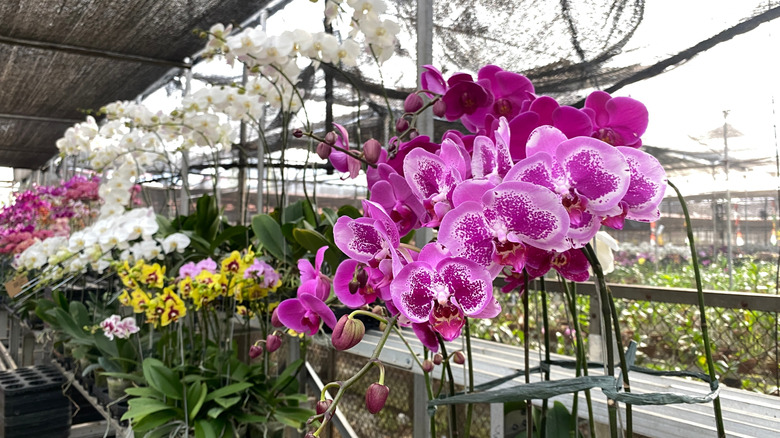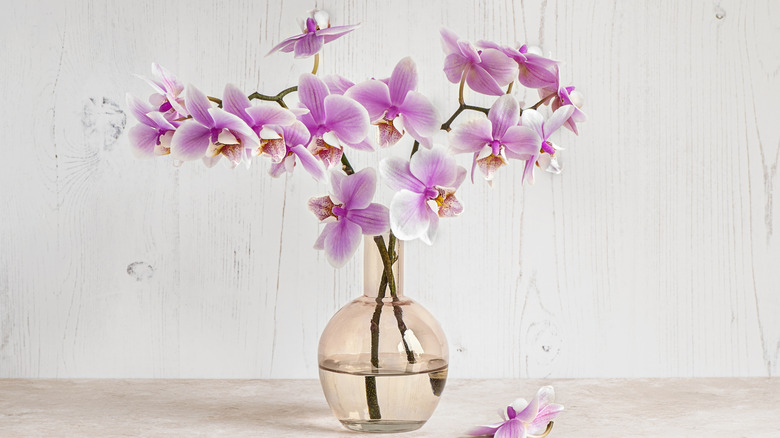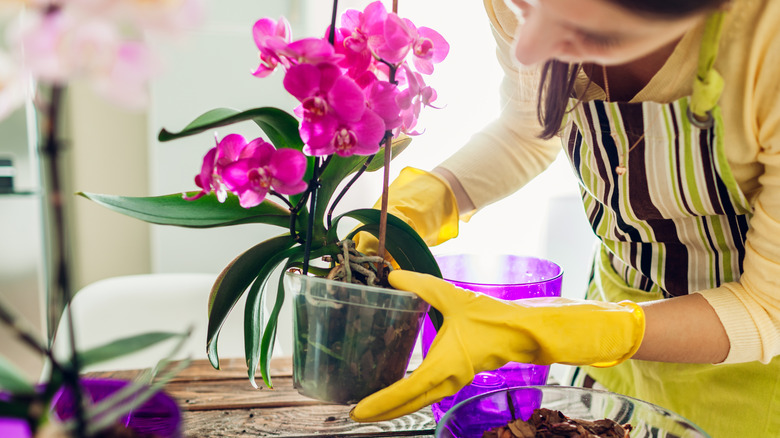What To Look For When Buying An Orchid From The Store (& Mistakes To Avoid)
We may receive a commission on purchases made from links.
Orchids have inspired obsession, theft, and even Hollywood — just ask The Orchid Thief or Meryl Streep in Adaptation. But this fascination isn't just aesthetic. Orchids are among the most evolutionarily advanced plants on Earth, with complex flower structures and reproductive tactics that have allowed them to diversify into tens of thousands of species. For most plant lovers, the real challenge begins not in the jungle but at the garden center.
One of the biggest beginner mistakes you can make when choosing an orchid? Going purely on flower appearance without checking if it suits your home's conditions. Many orchids originate from the tropics and require specific humidity and light levels to thrive. That's why horticultural experts at Penn State Extension recommend sticking with moth orchids (Phalaenopsis) or slipper orchids (Paphiopedilum) for indoor growers. These types are adaptable and widely available, making them beginner-friendly. So you'll want to narrow your options to help you to choose the right orchid for your space and learn some beginner care tips.
But what should you look for when at the store in front of an overwhelming spread of floral beauty? For starters, if the orchid isn't labeled or lacks a care tag, that's a red flag. Not knowing what you're growing makes it harder to meet its needs, making it less likely to thrive. Knowledge is power, so resist the urge to impulse-buy. Instead, do a little research in the aisle or ask for help from a store employee. And, of course, heed the following.
Don't bring home trouble, or how to spot a healthy orchid in-store
Looks can be deceiving when it comes to orchids. That stunning bloom might be hiding serious issues. A healthy orchid should have medium-green, turgid leaves (never floppy or yellowing), firm white roots visible in the potting medium, and no signs of pests or disease. If the plant feels loose in the pot, that may mean the roots have rotted or broken off.
Examine both sides of the leaves for spots or speckles, which could signal an incurable virus. Check the potting mix for crawling pests like mealybugs or scale, which often hide in bark crevices and can be hard to eliminate once introduced into your home. Also, you'll want to look for signs of new growth (such as green root tips or emerging leaves) and choose plants with some buds still unopened so you'll get longer-lasting blooms at home.
Another major mistake is buying from sources with sickly, crowded, or unlabeled stock. Even if the flowers look impressive, poor plant health can be hard to reverse — and pests could spread to your other houseplants. Consider using a checklist to help you avoid the most common orchid-buying mistakes, and read up on what mistakes in orchid care to avoid.
What to do after you buy your orchid (don't skip this step)
You've done your research and picked out the perfect orchid; now, don't let it suffer in its store-bought setup. One of the most overlooked mistakes is failing to repot a new orchid shortly after bringing it home. Look for an orchid bark or moss mix, like rePotme Orchid Potting Mix, and transfer the plant to a slightly larger pot with fresh, breathable medium. That thin plastic nursery container and compacted bark may be holding too much moisture, leading to root rot.
Along with improving airflow, repotting also gives you a chance to inspect the roots more closely and trim any that are dead or mushy. While you're at it, double-check for hidden pests and consider quarantining your new orchid for a week or two if you have other plants. This extra precaution could save your collection from a mealybug outbreak.
Proper watering also starts here: Various media (like bark versus moss) hold moisture differently, so getting familiar with your orchid's setup is essential. New orchid owners often overwater or use the wrong water type, so it's worth brushing up on the science and art of watering — including common mistakes and how to avoid them, like watering with water containing salt from a softener.


